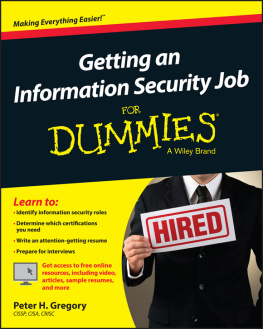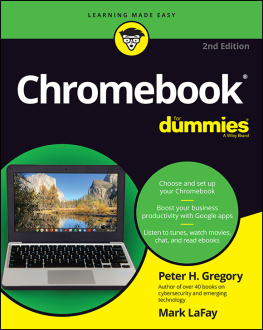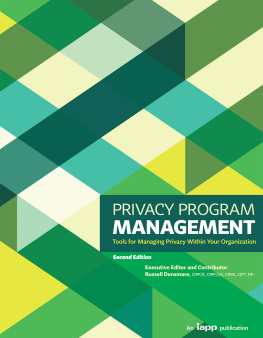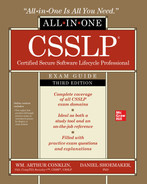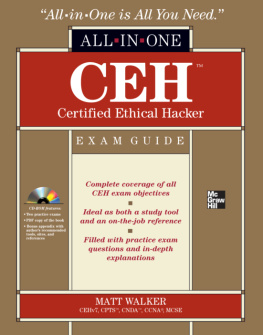Contents
Guide
Page List
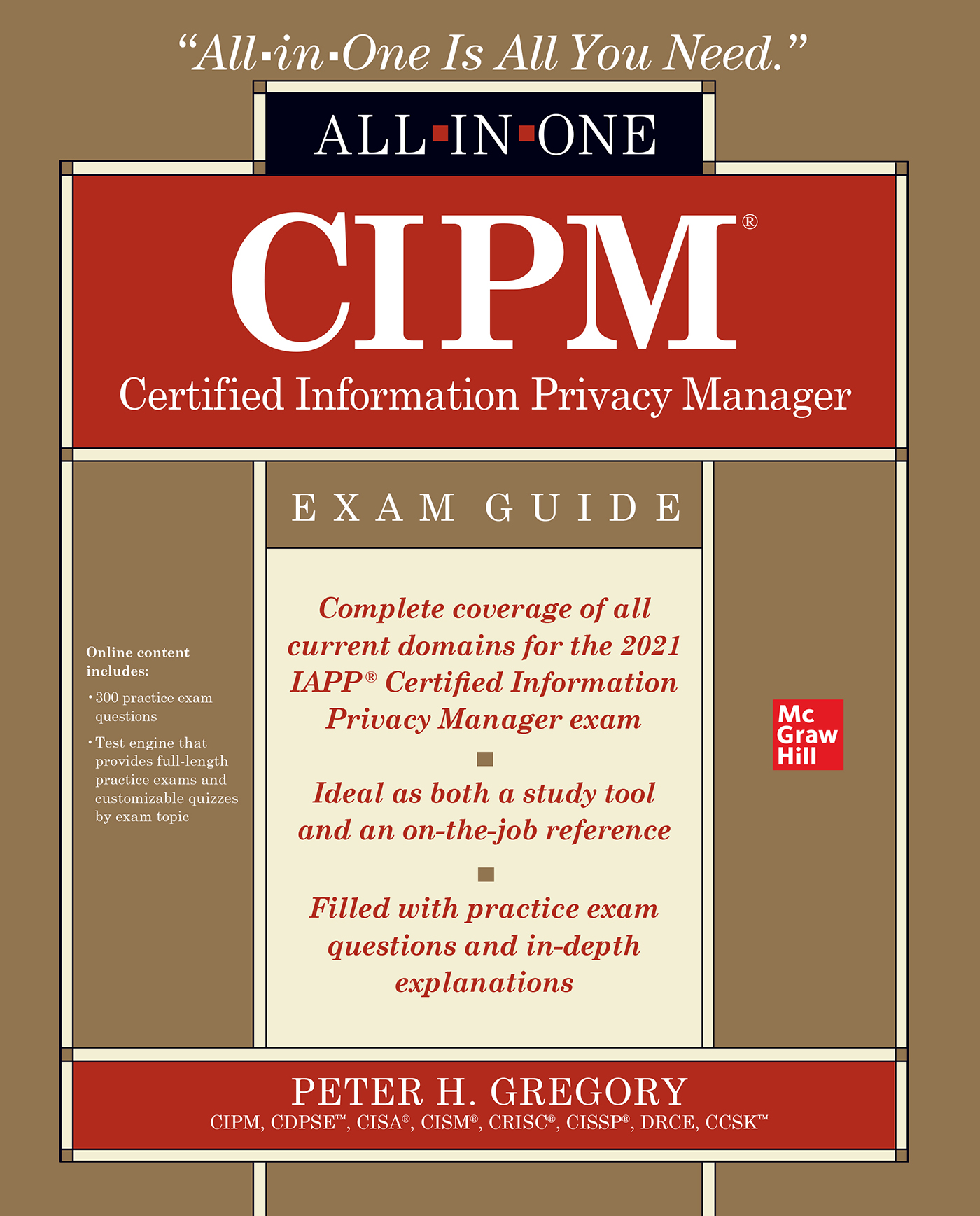
ABOUT THE AUTHOR
Peter H. Gregory, CIPM, CDPSE, CISA, CISM, CRISC, CISSP, DRCE, CCSK, is a 30-year career technologist and a security leader in a telecommunications company. He has been developing and managing information security management programs since 2002 and has been leading the development and testing of secure IT environments since 1990. Peter has also spent many years as a software engineer and architect, systems engineer, network engineer, and security engineer. He has written many articles, whitepapers, user manuals, processes, and procedures throughout his career, and he has conducted numerous lectures, training classes, seminars, and university courses.
Peter is the author of more than 40 books about information security and technology, including Solaris Security, CISM Certified Information Security Manager All-In-One Exam Guide, and CISA Certified Information Systems Auditor All-In-One Exam Guide. He has spoken at numerous industry conferences, including RSA, Interop, (ISC) Congress, ISACA CACS, SecureWorld Expo, West Coast Security Forum, IP3, Source, Society for Information Management, the Washington Technology Industry Association, and InfraGard.
Peter serves on advisory boards for cybersecurity education programs at the University of Washington and the University of South Florida. He was the lead instructor for nine years in the University of Washington certificate program in applied cybersecurity, a former board member of the Washington State chapter of InfraGard, and a founding member of the Pacific CISO Forum. Peter is a 2008 graduate of the FBI Citizens Academy and a member of the FBI Citizens Academy Alumni Association. He is also a member of the IAPP, ISACA, and (ISC).
Peter resides with his family in Washington state and can be found online at www.peterhgregory.com.
About the Technical Editor
John Clark, CIPP/E, CIPT, FIP, CDPSE, CISSP, CISA, CISM, is an information security executive advisor to CISOs, CIOs, boardrooms, and business executives. John has contributed to many articles, blogs, and presentations addressing privacy program management and has spoken on the topic at industry conferences. With more than 20 years of experience in information security and privacy, he has developed a passion for working with clients to develop sustainable, business-aligned information security and privacy management programs that can be applied to emerging regulations with minimal change. In addition to earning multiple industry certifications, John has a bachelors degree in management information systems and an MBA from the University of Houston.

Copyright 2021 by McGraw Hill. All rights reserved. Except as permitted under the United States Copyright Act of 1976, no part of this publication may be reproduced or distributed in any form or by any means, or stored in a database or retrieval system, without the prior written permission of the publisher, with the exception that the program listings may be entered, stored, and executed in a computer system, but they may not be reproduced for publication.
ISBN: 978-1-26-047410-7
MHID: 1-26-047410-0
The material in this eBook also appears in the print version of this title: ISBN: 978-1-26-047409-1, MHID: 1-26-047409-7.
eBook conversion by codeMantra
Version 1.0
All trademarks are trademarks of their respective owners. Rather than put a trademark symbol after every occurrence of a trademarked name, we use names in an editorial fashion only, and to the benefit of the trademark owner, with no intention of infringement of the trademark. Where such designations appear in this book, they have been printed with initial caps.
McGraw-Hill Education eBooks are available at special quantity discounts to use as premiums and sales promotions or for use in corporate training programs. To contact a representative, please visit the Contact Us page at www.mhprofessional.com.
Information has been obtained by McGraw Hill from sources believed to be reliable. However, because of the possibility of human or mechanical error by our sources, McGraw Hill, or others, McGraw Hill does not guarantee the accuracy, adequacy, or completeness of any information and is not responsible for any errors or omissions or the results obtained from the use of such information.
TERMS OF USE
This is a copyrighted work and McGraw-Hill Education and its licensors reserve all rights in and to the work. Use of this work is subject to these terms. Except as permitted under the Copyright Act of 1976 and the right to store and retrieve one copy of the work, you may not decompile, disassemble, reverse engineer, reproduce, modify, create derivative works based upon, transmit, distribute, disseminate, sell, publish or sublicense the work or any part of it without McGraw-Hill Educations prior consent. You may use the work for your own noncommercial and personal use; any other use of the work is strictly prohibited. Your right to use the work may be terminated if you fail to comply with these terms.
THE WORK IS PROVIDED AS IS. McGRAW-HILL EDUCATION AND ITS LICENSORS MAKE NO GUARANTEES OR WARRANTIES AS TO THE ACCURACY, ADEQUACY OR COMPLETENESS OF OR RESULTS TO BE OBTAINED FROM USING THE WORK, INCLUDING ANY INFORMATION THAT CAN BE ACCESSED THROUGH THE WORK VIA HYPERLINK OR OTHERWISE, AND EXPRESSLY DISCLAIM ANY WARRANTY, EXPRESS OR IMPLIED, INCLUDING BUT NOT LIMITED TO IMPLIED WARRANTIES OF MERCHANTABILITY OR FITNESS FOR A PARTICULAR PURPOSE. McGraw-Hill Education and its licensors do not warrant or guarantee that the functions contained in the work will meet your requirements or that its operation will be uninterrupted or error free. Neither McGraw-Hill Education nor its licensors shall be liable to you or anyone else for any inaccuracy, error or omission, regardless of cause, in the work or for any damages resulting therefrom. McGraw-Hill Education has no responsibility for the content of any information accessed through the work. Under no circumstances shall McGraw-Hill Education and/or its licensors be liable for any indirect, incidental, special, punitive, consequential or similar damages that result from the use of or inability to use the work, even if any of them has been advised of the possibility of such damages. This limitation of liability shall apply to any claim or cause whatsoever whether such claim or cause arises in contract, tort or otherwise.
To my wife Rebekah, my mother, Nathan, Shannon, and my extended family for their encouragement and support over the past sixteen years.
To current and aspiring privacy professionals everywhere who own the mission of protecting personal information about customers, employees, and constituents.
CONTENTS AT A GLANCE
CONTENTS
INTRODUCTION
The information revolution has transformed businesses, governments, and people in profound ways. Virtually all business and government operations are now digital, resulting in everyones personal details stored in information systems.
Two issues have arisen out of this transformation: the challenge to safeguard personal information from criminal organizations, and the challenge to ensure that personal information is used only for clearly stated purposes. Difficulties in meeting these challenges have helped create and emphasize the importance of the cybersecurity and information privacy professions. Numerous security and privacy laws, regulations, and standards have been enacted and created, imposing a patchwork of new requirements on organizations and governments to enact specific practices to protect and control the use of our personal information.


